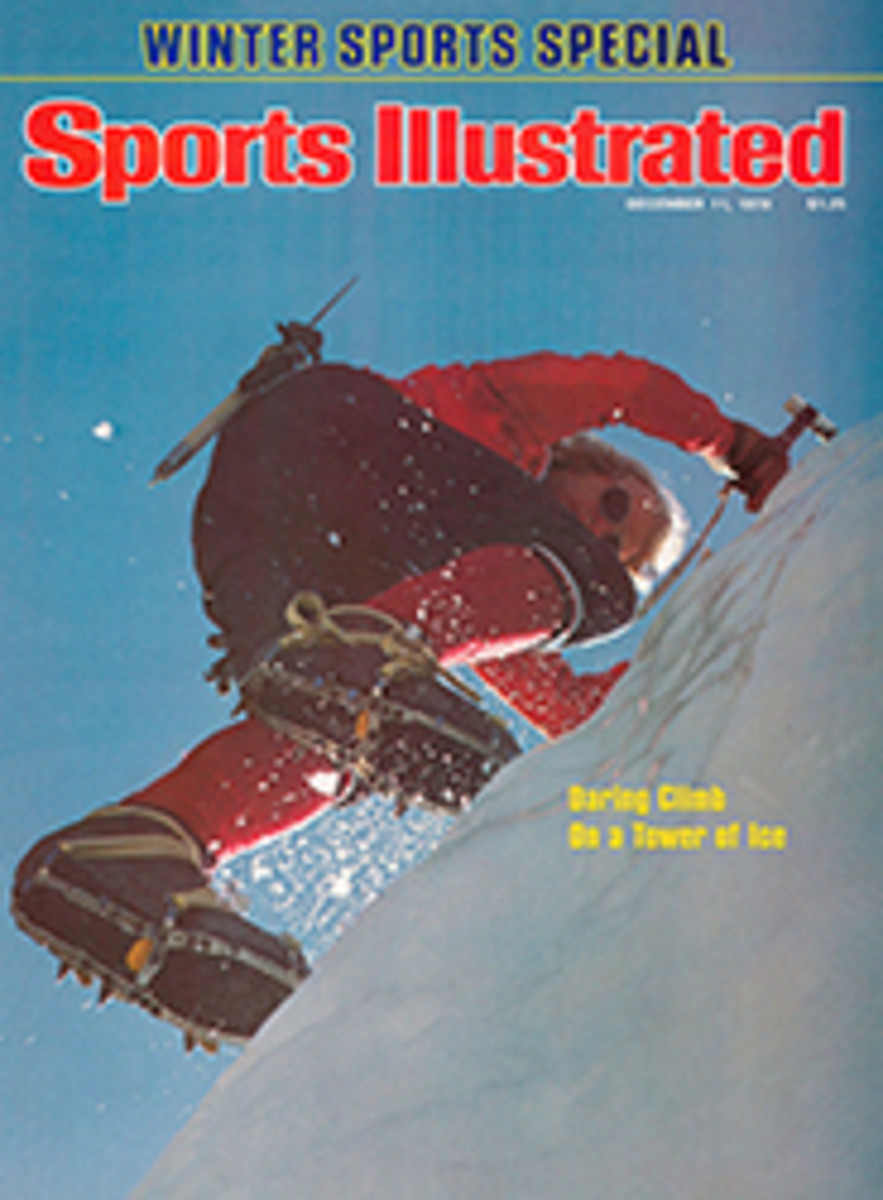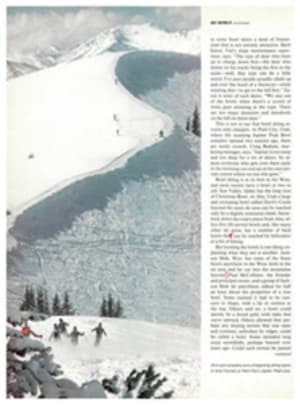
RACY IS THE WORD FOR THE NEW SKIWEAR
Time was when skiing's hotshots would show up with racing stripes on a pair of stretch pants, hoping to be mistaken for Billy Kidd or Jean-Claude Killy. It turns out that was just the beginning. The let's-go-racing influence has swept the industry and this season's message is clear: no matter how slow you ski, look fast at all times. Today Nordic skis are skinnier, Alpine skis are longer, boots are lighter and ski clothing is stretching out in all directions. The new generation of bindings is more finely tuned, ski poles offer strapless grips, and insulated ski gloves have taken on new shapes. The happy result is that function has finally come to share equal billing with fancy looks. At least that seems to be the case with the kids bombing Lake Placid's downhill course, at right, as well as with all the skiers on the following pages.
Previewing an Olympic run on Whiteface, Arthur and Cristina Lussi wear Fusalp's padded sweaters and pants. Why padding? Well, since real racers bang into gates, other skiers want to look as if they might.
No one would wear a T shirt without an emblem these days, so why not a stretch racing suit topped oil with an RM vest (above left) designed by ex-Olympian Rosi Mittermaier for Braun. The picket line of new skis shows this season's longer models, product of a renewed emphasis on competition. In the "Star Wars"-inspired tableau at right, all the outfits are stretch. Head's one-piece suit is worn with a Hydron mask; the invader in the putty nylon plume parka wears stretch-fabric mittens to match the pants, all from HCC for Andrè No‚Äö√†√∂¬¨¬•l. The white outfit is the West German ski team's uniform by Bogner (no, they don't race in the mask); another Fusalp outfit is the Tile vest worn in snow—in this case over a Profile jumpsuit by Monika Tilley.
It takes roughly 20 hours to manufacture a Silvy Tricot Super-Slalom sweater (above), and about $350 to buy one. Imported from Italy by Regina, it combines wool with Spandex girdle fabric—the better to protect back and kidneys—and has a tricot lining, padded arms and zippers on each side. The Demetre sweater at top right is worn by Nancy Pfister, while Ron Krenzel is suited up in racing shell and stretch pants from Roffe. Pam Palmedo displays new boots while wearing a skinny suit from Beconta. She wears Scott boots; others are by Risport, Tecnica, Hanson and Garmont.
Alpine goes down and Nordic goes across, but each discipline has begun to borrow ideas from the other: cross-country buffs now find stretch fabrics acceptable, while Alpinists layer it on with vests and sweaters. Former Olympic ski jumper Jay Rand (left) strides forth in a cardinal racing suit by Odlo; it's warm because it is made of Helanca and stretch nylon with cotton inside. Both suit and gloves are imported from Norway by Sportco. His racing shoes and skis are by Adidas. Swinging along a Nordic trail in the Adirondacks (below), Chris Beattie and Sandy Wilson wear stretch suits made of nylon and cotton with action-shoulder inserts of Antron and Spandex; both suits are from Demetre.
All lined up and ready to go, the new Nordic skis (above) are representative of this year's slightly skinnier, racer-influenced breed: Fischer with Dynafit boots; Völkl with Dalex from Vener Associates; Rossignol with Adidas; Peltonen from Exel-Silenta with Adidas. The Landsem skis, Fels shoes and the Nordic suit shown are all from Sportco. Carrera's Porsche sunglasses offer changeable lenses and can go both Nordic and Alpine, which is a blessing, since they cost $76. Only 15,000 registered pairs are available in the U.S. Shedding layers, Bill Brewster peels to a stretch suit; the complete rig includes warmup pants, jacket and vest, all from Demetre.
THIRTEEN PHOTOS
JOHN G. ZIMMERMAN

